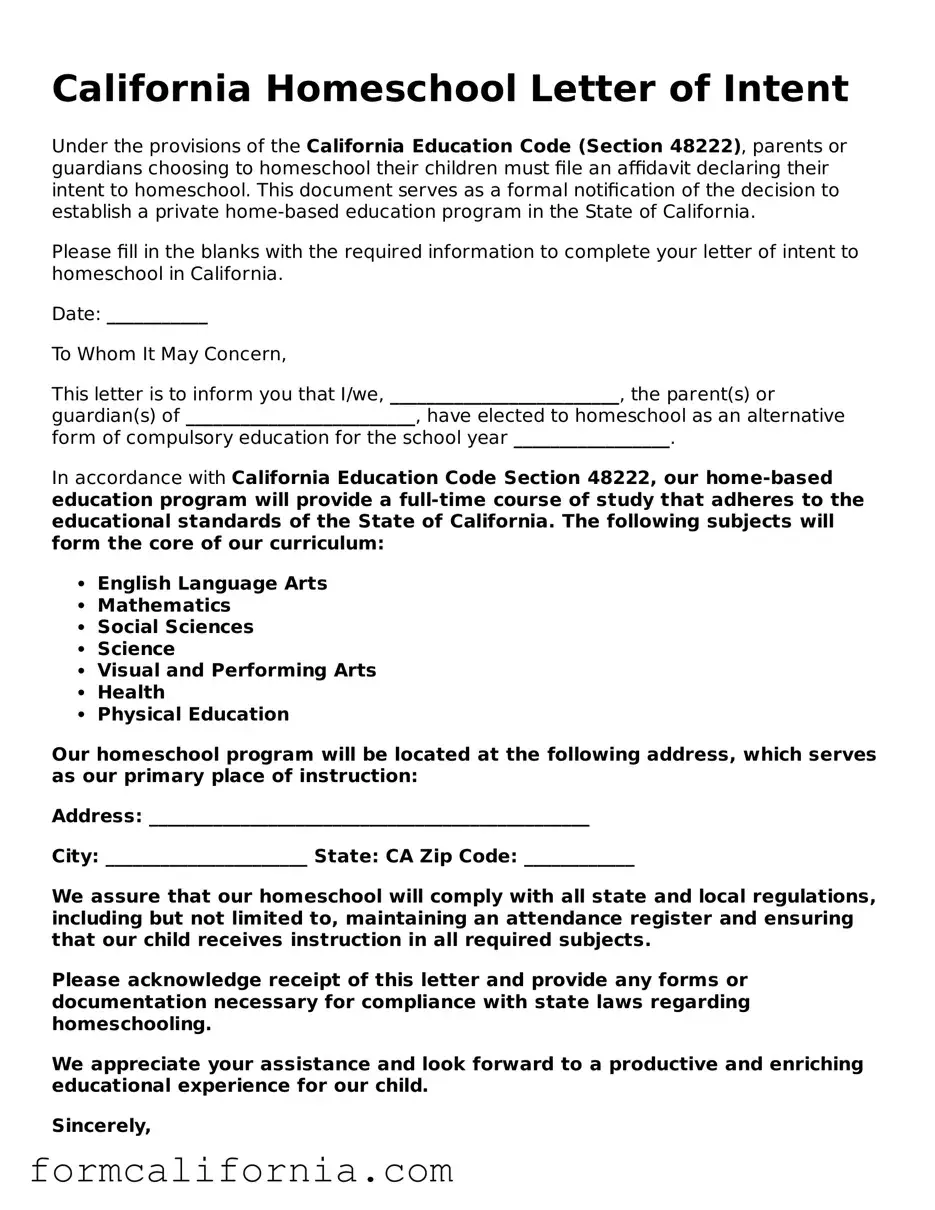California Homeschool Letter of Intent
Under the provisions of the California Education Code (Section 48222), parents or guardians choosing to homeschool their children must file an affidavit declaring their intent to homeschool. This document serves as a formal notification of the decision to establish a private home-based education program in the State of California.
Please fill in the blanks with the required information to complete your letter of intent to homeschool in California.
Date: ___________
To Whom It May Concern,
This letter is to inform you that I/we, _________________________, the parent(s) or guardian(s) of _________________________, have elected to homeschool as an alternative form of compulsory education for the school year _________________.
In accordance with California Education Code Section 48222, our home-based education program will provide a full-time course of study that adheres to the educational standards of the State of California. The following subjects will form the core of our curriculum:
- English Language Arts
- Mathematics
- Social Sciences
- Science
- Visual and Performing Arts
- Health
- Physical Education
Our homeschool program will be located at the following address, which serves as our primary place of instruction:
Address: ________________________________________________
City: ______________________ State: CA Zip Code: ____________
We assure that our homeschool will comply with all state and local regulations, including but not limited to, maintaining an attendance register and ensuring that our child receives instruction in all required subjects.
Please acknowledge receipt of this letter and provide any forms or documentation necessary for compliance with state laws regarding homeschooling.
We appreciate your assistance and look forward to a productive and enriching educational experience for our child.
Sincerely,
_______________________________________
Signature of Parent/Guardian
_______________________________________
Printed Name of Parent/Guardian
Contact information for further correspondence:
- Email Address: ___________________________________
- Phone Number: _____________________________________
